Hoops Rumors is checking in on the 2025 offseason for all 30 NBA teams, recapping the summer’s free agent signings, trades, draft picks, departures, and more. We’ll take a look at each team’s offseason moves and consider what might still be coming before the regular season begins. Today, we’re focusing on the Denver Nuggets.
Free agent signings
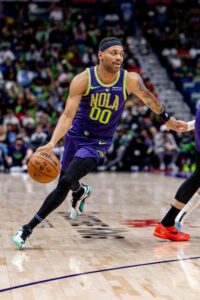 Bruce Brown: One year, minimum salary. Signed using minimum salary exception.
Bruce Brown: One year, minimum salary. Signed using minimum salary exception.- Tim Hardaway Jr.: One year, minimum salary. Signed using minimum salary exception.
- Kessler Edwards: One year, minimum salary. Non-guaranteed (Exhibit 10). Signed using minimum salary exception.
Trades
Draft picks
Two-way signings
- Tamar Bates
- One year, $85,300 partial guarantee (will increase to $318,218 at start of regular season).
- Curtis Jones
- One year, $85,300 partial guarantee (will increase to $318,218 at start of regular season).
- Spencer Jones
- One year, $85,300 partial guarantee.
Departed/unsigned free agents
Other roster moves
Salary cap situation
- Operating over the cap ($154.6MM) and above the luxury tax line ($187.9MM).
- Carrying approximately $188.3MM in salary.
- No hard cap.
- Taxpayer mid-level exception ($5,685,000) available.
- Two traded player exceptions available (largest worth $6,880,985).
The offseason so far
Typically, a team firing both its general manager and its head coach with less than a week left in the regular season would be a sign of major dysfunction and a signal that the roster of that presumably free-falling franchise is next in line for an overhaul.
But the Nuggets, who parted ways with Calvin Booth and Michael Malone on April 8, actually had a very strong finish this spring — they won the rest of their regular season games under new leadership, knocked off a tough Clippers team in the first round of the playoffs, then took the 68-win Thunder to seven games in the second round, giving the eventual champions the most difficult challenge they faced in the Western Conference bracket.
Denver has since internally promoted executive Ben Tenzer to replace Booth and handed the head coaching reins to former Malone assistant David Adelman. The decision to stay in house to fill both jobs suggests that management believes the Booth/Malone duo, specifically, was the problem and that a full-fledged organizational reset isn’t necessary.
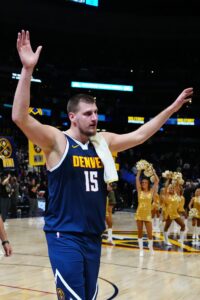 That thinking carried over for the most part this offseason to the roster, where a starting group headed up by Nikola Jokic, Jamal Murray, and Aaron Gordon has been the Nuggets’ strength in recent years, while the bench has lagged behind. Only seven Denver players appeared in all seven games of the OKC series this spring, and only six of those players averaged at least 15 minutes per game, an indicator of how heavily the team leaned on its starters even after Malone’s departure.
That thinking carried over for the most part this offseason to the roster, where a starting group headed up by Nikola Jokic, Jamal Murray, and Aaron Gordon has been the Nuggets’ strength in recent years, while the bench has lagged behind. Only seven Denver players appeared in all seven games of the OKC series this spring, and only six of those players averaged at least 15 minutes per game, an indicator of how heavily the team leaned on its starters even after Malone’s departure.
So with one exception (which we’ll get to in a minute), the Nuggets focused this summer on upgrading their bench. They reunited with Bruce Brown, who played a significant role as a jack-of-all-trades off the bench during the club’s championship run in 2023. Based on his play that year, Brown got too expensive for Denver to retain at the time, but his stock had dropped following up-and-down stints in Indiana, Toronto, and New Orleans, opening the door for the Nuggets to bring him back on a minimum-salary deal.
The Nuggets also got a team-friendly veteran’s minimum rate for Tim Hardaway Jr., a veteran wing who hasn’t averaged fewer than 26 minutes per game or made less than $16MM in a season since 2016/17. Hardaway isn’t exactly a two-way dynamo, but he’s a solid role player who can make three-pointers (.361 career 3PT%) and is versatile enough to guard multiple positions on defense. Getting him on the minimum should pay off, especially since he’s the sort of player who could benefit from playing with Jokic.
Speaking of Jokic, the Nuggets hadn’t made it a priority in recent years to find him a reliable backup, but that was a goal this offseason, resulting in a trade that sent Dario Saric to Sacramento in exchange for Jonas Valanciunas.
It seemed for a few weeks as if Valanciunas was looking to get out of his NBA contract in order to sign with Panathinaikos in Greece, but the Nuggets wanted the big man in Denver, and non-stars who are under contract generally have little leverage to steer themselves to preferred destinations. So it didn’t come as a real surprise when Valanciunas eventually confirmed he’d be reporting to the Nuggets and expressed enthusiasm about playing for the team.
If Valanciunas embraces the opportunity available for him in Denver, he should be a great fit behind Jokic. The bruising Lithuanian is a talented low-post scorer and rebounder whose steady production could allow the Nuggets to lean a little less heavily on their three-time MVP than they’ve had to in recent years — Jokic averaged a career-high 36.7 minutes per game in 2024/25, but I’d be pretty shocked if he played that much again in ’25/26.
While much of Denver’s offseason work focused on improving the bench, the team did make one noteworthy change to its starting lineup, sending Michael Porter Jr. and an unprotected 2032 first-round pick to Brooklyn in exchange for Cameron Johnson.
Porter was an important part of the Nuggets’ title team and has been an effective secondary scorer – and their most reliable three-point shooter – in recent years. But he was a negative on the defensive end and was overpaid on his maximum-salary contract.
Swapping him out for Johnson, who is owed just $44MMish over the next two seasons, will give Denver a comparable scorer and shooter (Johnson averaged 18.8 PPG and made 39.0% of his threes for Brooklyn last season) who should be more of an asset defensively — it also created the financial flexibility necessary to bring in a player like Valanciunas and his $10.4MM cap hit. That 2032 first-rounder, which will convey when Jokic is 37 years old, could end up being a pretty valuable pick, but the Nuggets deemed it a worthwhile risk to give it up in an effort to maximize their superstar’s prime.
Up next
The Nuggets are carrying just 14 players on guaranteed contracts and have room to add a 15th man. While they technically have several cap exceptions available, including the mid-level, bi-annual, and a pair of modest trade exceptions, using any of those – with the exception of the taxpayer portion of the mid-level exception – would hard-cap them at the first tax apron. The club is already less than $3MM away from that threshold.
That means if Denver does carry a 15th man, it’s more likely to be a minimum-salary player whose contract isn’t fully guaranteed, in order to give the team some in-season flexibility. Veteran forward Kessler Edwards, who signed an Exhibit 10 deal, is one candidate to make the roster in that capacity.
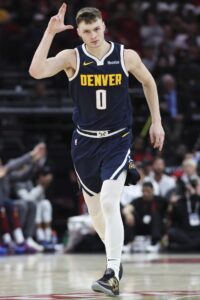 For what it’s worth, due to incentives in the Johnson and Gordon contracts, the Nuggets are relatively close to the first apron despite only being $400K or so above the luxury tax line. While Denver has gone out of its way not to hard-cap itself so far this offseason, I still think the club is probably more likely to finish the 2025/26 season below the tax line than above the first apron — the Nuggets have been a taxpayer for three straight years, so dipping below that threshold this season could be an important first step toward resetting the repeater clock.
For what it’s worth, due to incentives in the Johnson and Gordon contracts, the Nuggets are relatively close to the first apron despite only being $400K or so above the luxury tax line. While Denver has gone out of its way not to hard-cap itself so far this offseason, I still think the club is probably more likely to finish the 2025/26 season below the tax line than above the first apron — the Nuggets have been a taxpayer for three straight years, so dipping below that threshold this season could be an important first step toward resetting the repeater clock.
Jokic and Johnson are both eligible for veteran contract extensions this offseason, but Jokic has reportedly conveyed a preference to wait until 2026 (when he’d be eligible for a more lucrative deal), while Johnson faces extend-and-trade restrictions after being dealt to Brooklyn and may want to wait until next summer too.
That leaves Christian Braun and Peyton Watson as the Nuggets’ most important preseason extension candidates, with Braun leading the way. Having been elevated to the starting lineup last fall in the wake of Kentavious Caldwell-Pope‘s free agency departure, Braun has emerged as a critical supporting player in Denver, setting career highs with 15.4 points per game and a .397 3PT% in 2024/25.
The Nuggets will obviously want to keep Braun long-term, but with lucrative deals for Jokic, Murray, Gordon, and Johnson already on the books, the team will have to be careful about navigating the tax aprons going forward. Denver’s previous front office made a habit of freely handing out extensions and being willing to overpay to get them done, but being too generous with Braun could create some difficult roster decisions down the road. The team should be wary of going much beyond about $85-90MM for four years.
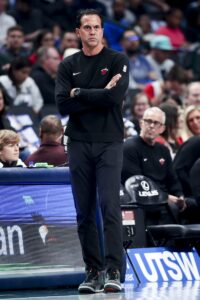
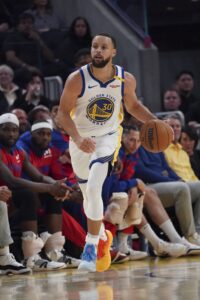 The top name on our list remains unchanged, as
The top name on our list remains unchanged, as 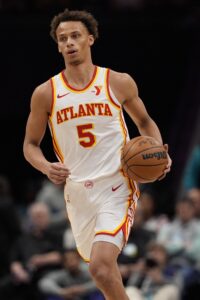 Ochai Agbaji
Ochai Agbaji
 That thinking carried over for the most part this offseason to the roster, where a starting group headed up by
That thinking carried over for the most part this offseason to the roster, where a starting group headed up by  For what it’s worth, due to incentives in the Johnson and Gordon contracts, the Nuggets are relatively close to the first apron despite only being $400K or so above the luxury tax line. While Denver has gone out of its way not to hard-cap itself so far this offseason, I still think the club is probably more likely to finish the 2025/26 season below the tax line than above the first apron — the Nuggets have been a taxpayer for three straight years, so dipping below that threshold this season could be an important first step toward resetting the
For what it’s worth, due to incentives in the Johnson and Gordon contracts, the Nuggets are relatively close to the first apron despite only being $400K or so above the luxury tax line. While Denver has gone out of its way not to hard-cap itself so far this offseason, I still think the club is probably more likely to finish the 2025/26 season below the tax line than above the first apron — the Nuggets have been a taxpayer for three straight years, so dipping below that threshold this season could be an important first step toward resetting the 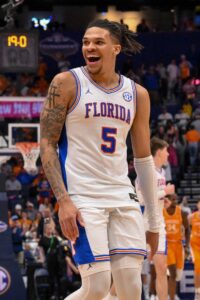 NBA insider Jake Fischer
NBA insider Jake Fischer 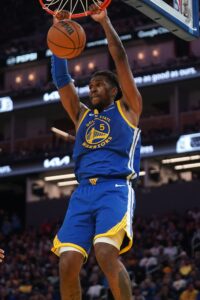
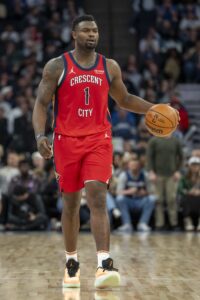 However, injuries to Williamson, Ingram, and a handful of other key Pelicans players consistently derailed the team’s forward momentum. During Griffin’s six seasons on the job, New Orleans posted a winning record just twice and compiled a total of two playoff victories in a pair of brief postseason appearances.
However, injuries to Williamson, Ingram, and a handful of other key Pelicans players consistently derailed the team’s forward momentum. During Griffin’s six seasons on the job, New Orleans posted a winning record just twice and compiled a total of two playoff victories in a pair of brief postseason appearances.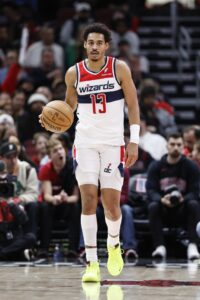 New Orleans has about $4.2MM in breathing room below the luxury tax line, which is more than enough for a 15th man on a minimum-salary contract. While it’s possible the team will leave that spot open to start the season for the sake of flexibility, it probably makes sense for depth purposes to fill it, given that Murray likely won’t be ready to play and a few other players will be managed carefully as they return from major injuries.
New Orleans has about $4.2MM in breathing room below the luxury tax line, which is more than enough for a 15th man on a minimum-salary contract. While it’s possible the team will leave that spot open to start the season for the sake of flexibility, it probably makes sense for depth purposes to fill it, given that Murray likely won’t be ready to play and a few other players will be managed carefully as they return from major injuries.